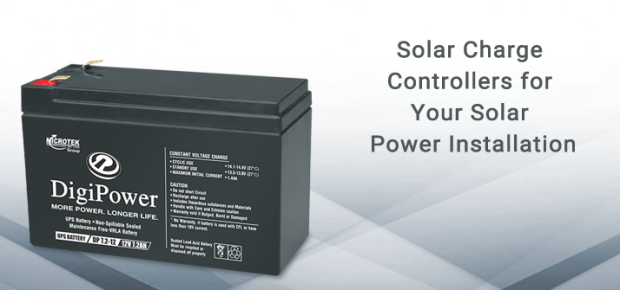The role of the charge controller is simple to understand. When you use the solar panels to charge your batteries, you will invariably reach a point where the batteries reach their full potential. But, since you are not aware of this, the solar panels will continue to charge your batteries. This will result in over charging the battery. The work of the charge controller is to make sure that this does not happen.

Increase in use of solar power
People are turning increasingly to solar power given the drive for nature conservation and the rise in disruptions in the regular power grid. Many top cities and districts like Aligarh, Delhi, Moradabad, and Agra have good infrastructure for the installation of solar power units. So, if you look for solar charge controllers suppliers Moradabad will have quite a few of them.
Types of charge controllers
You must use a charge controller if your solar installation produces more than 15 watts of power. Charge controllers vary in capacity, shape, and specifications. So, you can have a 4.5amp controller and this might go up to 80 amps. These higher end controls are MPPT types that are energy-efficient. You have three major types of controllers.
- Simple-1 or 2-Stage controllers: Here one controls the voltage in one or two steps through a relay or shunt transistors. They work by cutting the supply from the solar panel when you reach a certain voltage. Though inefficient, people still use them because they are cheap. However, they are reliable.
- PWM or 3-Stage controllers: These are the controllers used by most of the brands in the industry. They have good speed and reliability though they will cost more.
- Maximum Power Point Tracking (MPPT): These are the best controllers and do not have a large price too. The give 10% – 30% more power to the battery and show an efficiency of 95% – 98%.
The indicators used with the controllers are in most cases a simple digital meter, or a simple LED. These lights tell you that there is a current and charging is in progress. If you have a meter, you can read the voltage and current during the charging operation.
Need for equalisation
Equalisation is an important part of the charging operations. In this, you make the voltage of all the batteries in the grid equal. In flooded batteries, you do this by passing bubbles. This will not work if the battery grid is too small. However, in normal cases, you can ‘top-up the voltage in those batteries in the grid that are not yet at the peak voltage. In off-grid systems, you can equalise the battery pack by the use of a charger and generator combination.